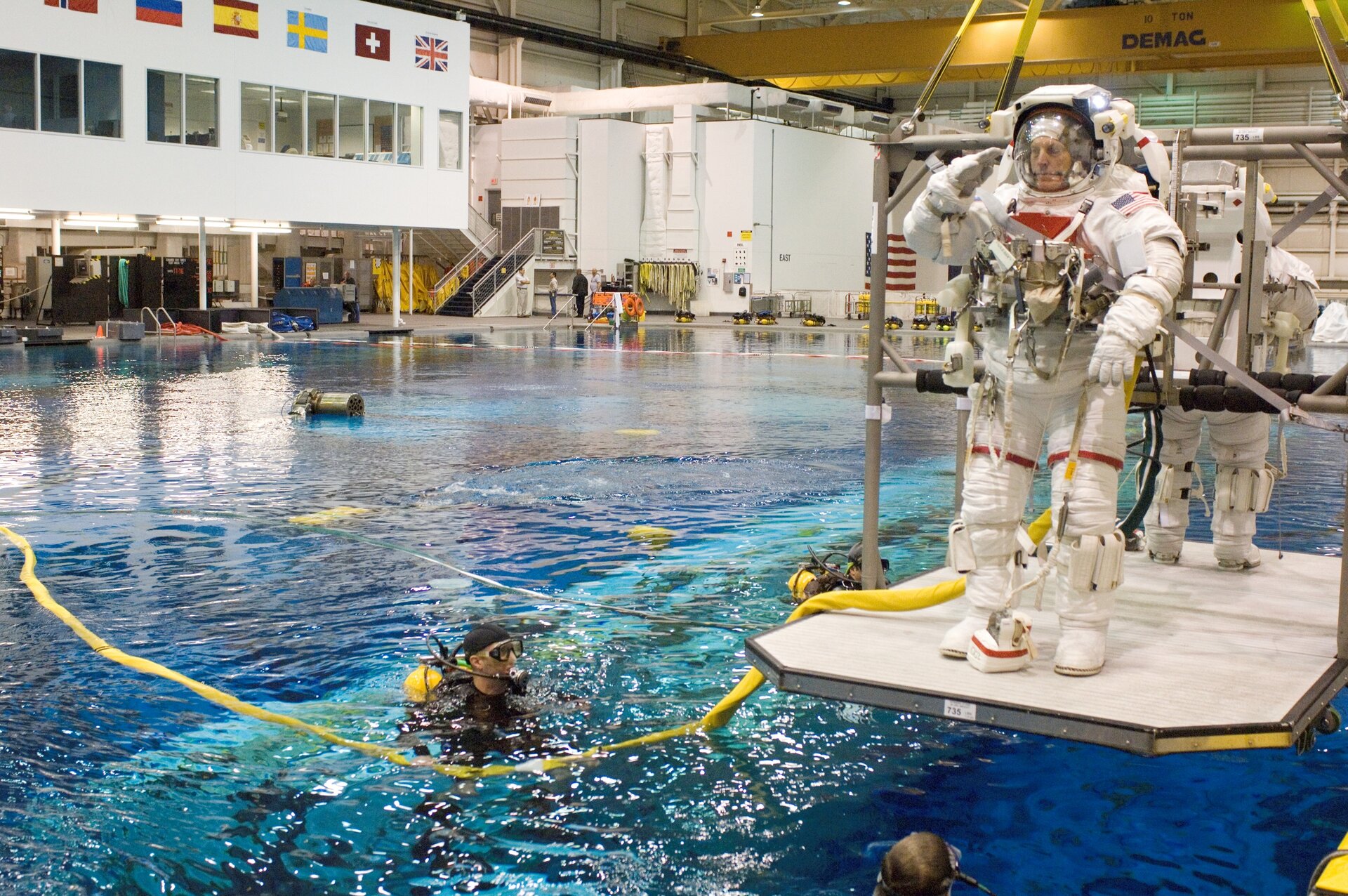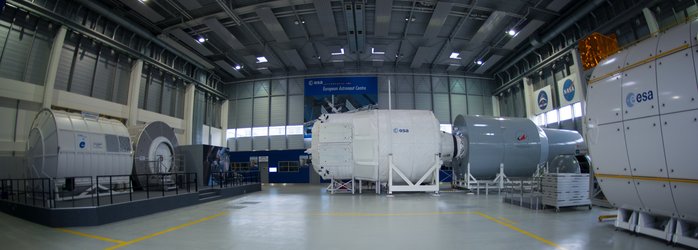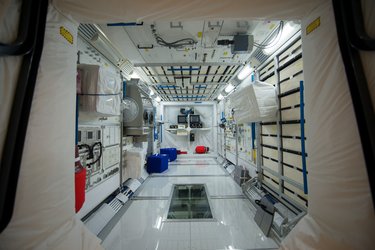Spacewalk training
The principle used to simulate weightlessness in a huge tank of water is called 'neutral buoyancy'. A neutrally buoyant object neither floats nor sinks. For an astronaut to be neutrally buoyant in the water, the natural tendency to float or sink is counteracted by weights or flotation devices.
Although it is not exactly the same as being weightless in space, astronauts and cosmonauts can practice in neutral buoyancy how to move large objects. You can still feel the pull of gravity while neutrally buoyant, and the drag of moving about through the water slows down your movements – but it is the closest you can get to microgravity on Earth.
Training in the NBL
The full spacewalk, or Extra Vehicular Activity (EVA), training for the ISS is traditionally done at NASA’s Neutral Buoyancy Laboratory (NBL) at the Johnson Space Center, Houston, Texas, and at the Gagarin Cosmonaut Training Center, in Russia. With almost 32 hours of EVA time in space under his belt, Swedish astronaut Christer Fuglesang is currently the most experienced spacewalker in the European Astronaut Corps.
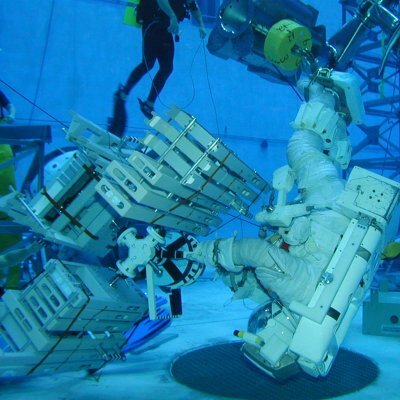
Fuglesang explains, "For each specific spacewalk, there are several training units to be completed. One EVA run lasts around 5 hours, and the standard right now is that you spend five to seven times as long in the NBL at Houston for each EVA, depending on the difficulty. In addition to that you train a lot of contingency scenarios."
With the assembly of the ISS in full swing, the EVA training schedule in the NBL is tight, the facility itself overbooked with operational and mission-related EVA training so the training schedule is compressed into three shifts a day. In addition, it will in future also be used for exploration related testing, which leaves little time for providing EVA skills training to ESA astronauts.
An assignment to take part in a spacewalk during a space mission depends on an EVA skills evaluation, which takes place at a very early stage of the EVA training programme in Houston. Those astronauts who handle their very first neutral buoyancy experiences in Houston well will be chosen to perform EVAs and receive the full-blown EVA training.
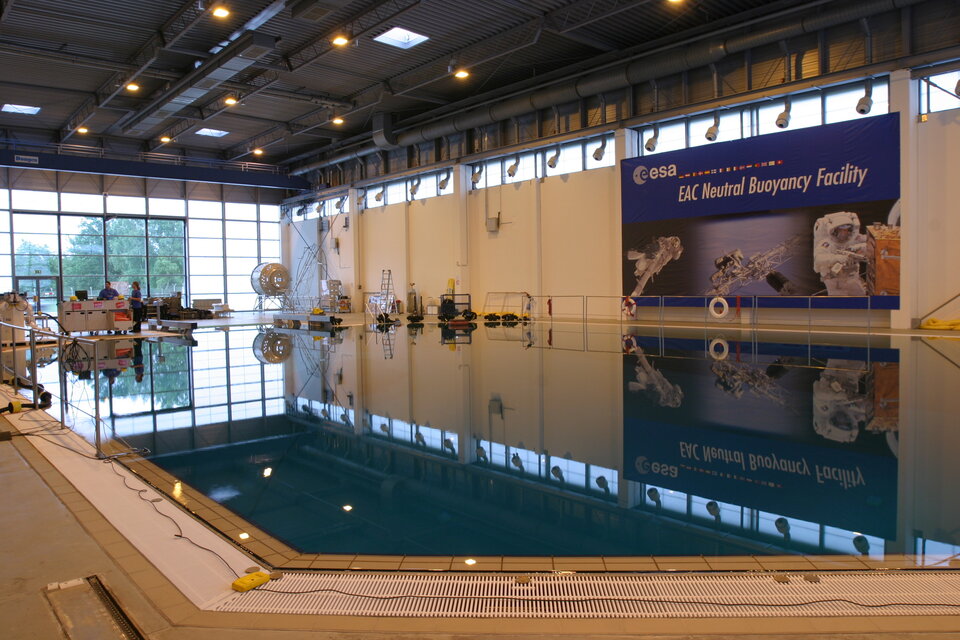
In this situation, EAC created a so-called EVA pre-familiarisation training course, which is conducted at EAC's Neutral Buoyancy Facility (NBF). This programme teaches ESA astronauts basic EVA concepts and EVA skills such as tethering to the Station, use of special EVA tools, communication with an EVA crewmate as well as with the control room and how to keep full situational awareness in a complex and challenging environment.
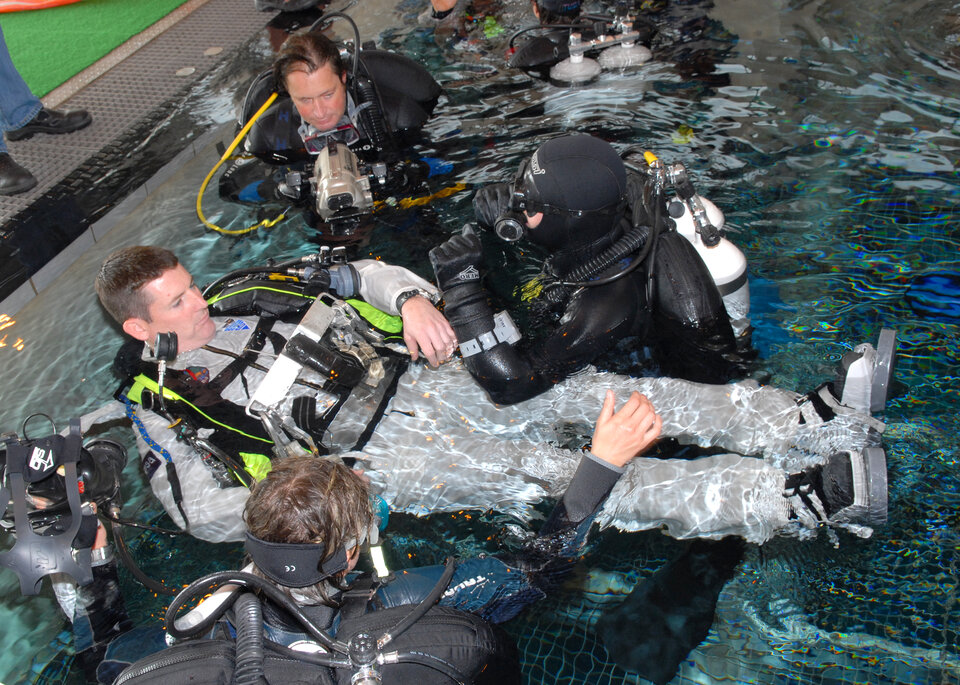
ESA astronauts André Kuipers and Frank De Winne participated in the EVA pre-familiarisation training at EAC and found that it significantly contributed to their performance during their first EVA training run in Houston. Not only were the astronauts happy – NASA management was also impressed by the work of EAC.
In a 2008 evaluation report, NASA praised EAC personnel for 'their innovation and hard work preparing this excellent course'. The report attributed the course with 'considerable potential' and said "Other international partner astronauts not in full-time training might find this program beneficial prior to commencing suited EVA training [in Houston]."


